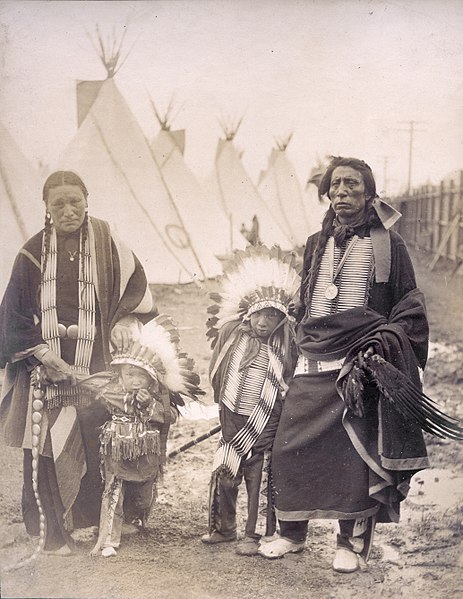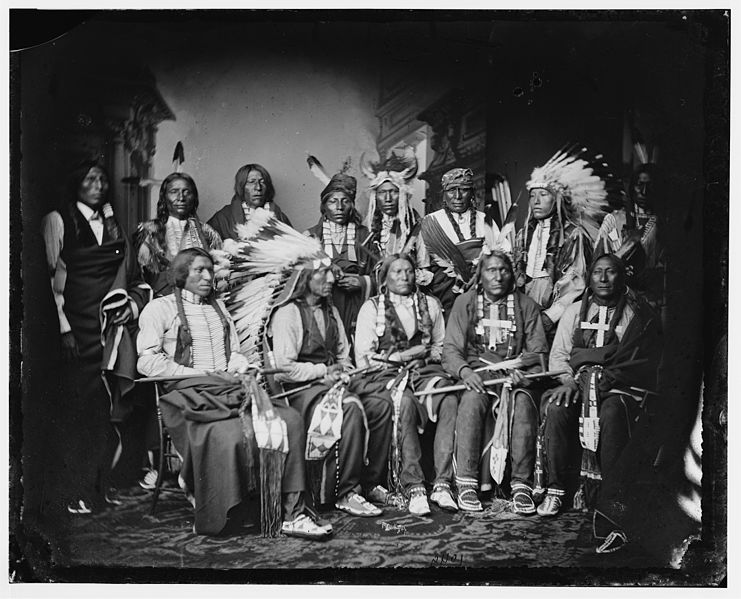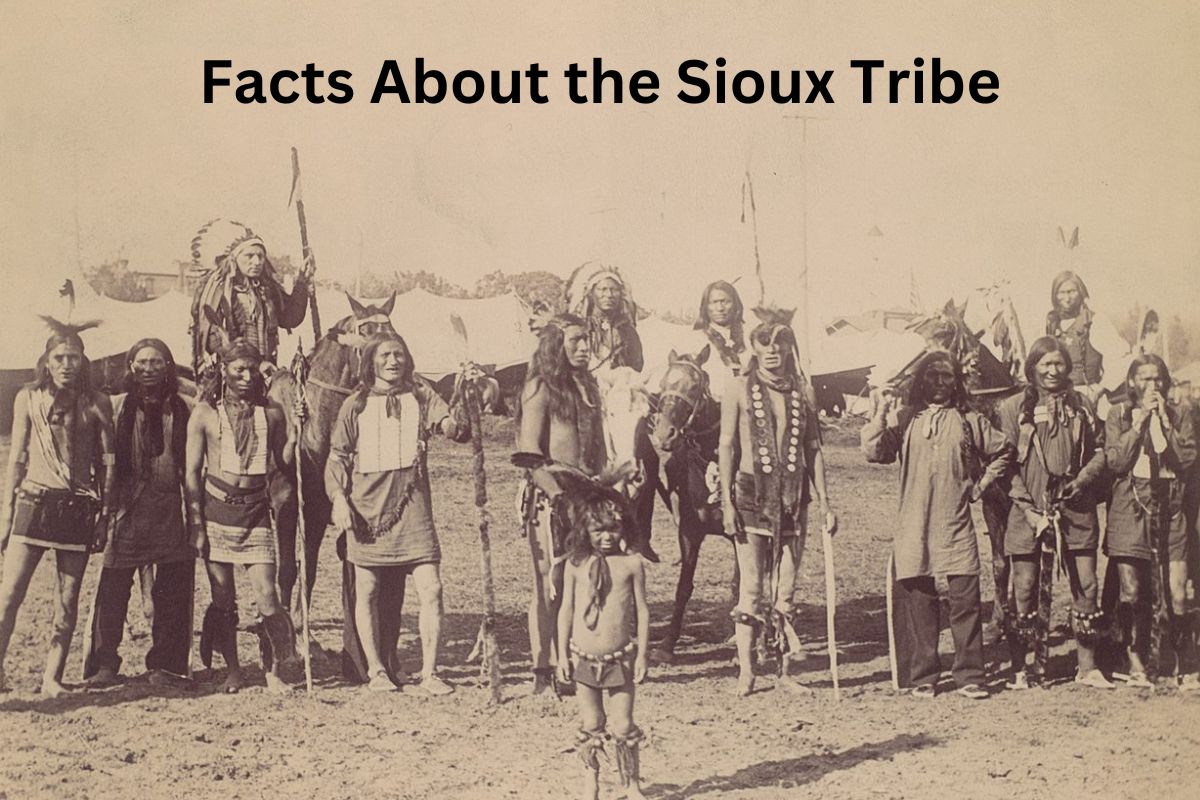The Sioux, also known as the Lakota or Dakota, are a group of Native American tribes with a rich cultural heritage and history that spans several centuries.
Traditionally inhabiting the Great Plains region of North America, the Sioux Nation is composed of three major divisions:
- Dakota
- Nakota
- Lakota
The Sioux people were nomadic hunters and gatherers who relied heavily on the buffalo for sustenance and developed exceptional horsemanship and warfare tactics.
They have a spiritual belief system centered around Wakan Tanka, the Great Spirit, and engage in various religious ceremonies such as the Sun Dance and vision quests.
The Sioux have a vibrant oral tradition, a deep connection to sacred sites like Bear Butte, and have been actively involved in advocating for environmental and land rights.
Today, they continue to preserve their cultural heritage through educational programs, cultural centers, and language revitalization efforts.
Sioux Tribe Facts
1. The Sioux, also known as the Lakota or Dakota traditionally inhabited the Great Plains region of North America
The Sioux, also known as the Lakota or Dakota, are a group of Native American tribes that traditionally inhabited the Great Plains region of North America. The term “Sioux” was given to them by French explorers and traders and has been widely used by non-Native people.
However, the Sioux people refer to themselves as Lakota or Dakota, depending on their specific division.

2. The Sioux Nation is made up of three major divisions: the Dakota, Nakota, and Lakota
The Sioux Nation is composed of three major divisions: the Dakota, Nakota, and Lakota. Each division has distinct dialects, cultural practices, and historical territories.
Also Read: Shoshone Tribe Facts
The Dakota are further divided into the Eastern Dakota (Santee) and the Western Dakota (Yanktonai and Yankton).
The Nakota are split into the Assiniboine and the Stoney tribes. The Lakota, the largest division, includes sub-tribes such as the Oglala, Brulé, Hunkpapa, Miniconjou, and Sicangu (Rosebud Sioux).
3. The Sioux people were historically nomadic hunters and gatherers who followed the buffalo herds for sustenance
Historically, the Sioux people were nomadic hunters and gatherers who followed the buffalo herds for sustenance. The buffalo played a central role in their way of life, providing them with food, clothing, tools, and shelter.
The Sioux developed sophisticated hunting techniques, such as communal buffalo hunts and the use of buffalo jumps (cliffs where buffalo could be driven over the edge). They utilized every part of the buffalo, wasting nothing and demonstrating a deep respect for the animal that sustained them.
Also Read: Indigenous Peoples Day Facts
Besides buffalo, they also gathered wild plants, hunted other game, and fished in rivers and lakes to supplement their diet. Their mobility allowed them to adapt to the vast plains and pursue a semi-nomadic lifestyle.
The Sioux people lived in tipis, portable cone-shaped dwellings made of buffalo hides stretched over wooden poles, which were easily assembled and disassembled as they moved across the plains. Tipis provided a practical and efficient living space that accommodated their nomadic lifestyle.
4. The Sioux were known for their skilled horsemanship and warfare tactics
The Sioux people were renowned for their exceptional horsemanship and warfare tactics. Horses were introduced to the Plains tribes by the Spanish in the 16th century and revolutionized the Sioux way of life.
The Sioux quickly mastered horsemanship and became skilled riders, allowing them to hunt more efficiently and engage in warfare with greater mobility.
They became known for their ability to conduct mounted buffalo hunts and engage in fast-paced warfare, including mounted archery and strategic maneuvers. The Sioux warriors were feared by their adversaries due to their horsemanship skills and tactical prowess.
The Battle of Little Bighorn in 1876 stands as one of the most notable examples of Sioux resistance against the U.S. Army. Led by Lakota Sioux leader Sitting Bull and accompanied by warriors such as Crazy Horse and Gall, the Sioux and their allies successfully defeated the 7th Cavalry Regiment under the command of General George Custer.
The battle, also known as Custer’s Last Stand, became a symbol of Native American resistance against encroachment on their lands.

5. The Sioux Nation signed the Fort Laramie Treaty of 1868 with the United States government
The Sioux Nation signed the Fort Laramie Treaty of 1868 with the United States government. The treaty established the Great Sioux Reservation, which encompassed a vast territory including parts of present-day North Dakota, South Dakota, Montana, Nebraska, and Wyoming.
The treaty recognized the Black Hills of South Dakota as part of the reservation, a sacred area to the Sioux people. However, the discovery of gold in the Black Hills prompted a rush of prospectors, leading to increased tensions and conflict.
In 1877, the U.S. government seized the Black Hills, in violation of the treaty, and declared it open for settlement.
This action sparked the Black Hills War, as the Sioux and their allies fiercely resisted the encroachment on their sacred lands. The conflict ultimately resulted in the defeat of the Sioux and the further loss of their ancestral territories.
6. The Sioux people have a spiritual belief system that centers around Wakan Tanka, the Great Spirit
The Sioux people have a spiritual belief system deeply rooted in their connection to the natural world. They believe in a higher power called Wakan Tanka, which translates to “Great Spirit” or “Great Mystery.”
Wakan Tanka is believed to be present in all living things and natural elements. The Sioux engage in various religious ceremonies and rituals to communicate with the spiritual realm, seek guidance, and maintain balance and harmony in their lives.
7. The Sioux have a rich oral tradition, passing down their history, legends, and cultural values through storytelling
The Sioux have a rich oral tradition that has been instrumental in preserving their history, legends, and cultural values.
Through storytelling, they pass down knowledge from one generation to another. Elders and tribal historians play a crucial role in recounting the tribe’s history, heroic deeds, and significant events.
These stories often feature prominent figures like Crazy Horse, Sitting Bull, Red Cloud, and others who played pivotal roles in Sioux history. The oral tradition ensures the continuity of Sioux culture and serves as a means of education, entertainment, and instilling cultural values in younger generations.
8. The Sioux Reservation is home to several iconic landmarks, including the sacred Bear Butte
The Sioux Reservation is home to several iconic landmarks that hold great spiritual significance. One of these landmarks is Bear Butte, located in South Dakota. Bear Butte is considered a sacred site by the Sioux and is used for vision quests, prayer ceremonies, and other spiritual practices.
It is a place where individuals seek spiritual guidance and connect with the spiritual realm. The Sioux hold deep reverence for Bear Butte and continue to utilize it for various cultural and religious activities.
9. In recent years, the Sioux tribes have been actively involved in environmental and land rights issues
In recent years, the Sioux tribes have been actively involved in environmental and land rights issues. They have been at the forefront of protests against the construction of the Keystone XL pipeline, which would pass through their ancestral lands and threaten their water supply and sacred sites.
The Sioux have raised concerns about potential environmental damage, the risk of oil spills, and the infringement on their treaty rights.
They have organized rallies, legal battles, and advocacy campaigns to protect their lands and resources, highlighting the ongoing struggle for indigenous rights and environmental justice.
10. Today, the Sioux tribes continue to preserve their cultural heritage and traditions while facing various challenges
Today, the Sioux tribes are dedicated to preserving their cultural heritage and addressing the challenges they face. Many Sioux reservations have established tribal colleges and educational programs to promote cultural preservation and provide educational opportunities for their communities.
These institutions offer courses in Native languages, traditional arts and crafts, tribal history, and other subjects that promote Sioux culture and identity. Cultural centers and museums also exist to showcase Sioux artifacts, artwork, and historical exhibits, allowing both tribal members and visitors to learn about Sioux traditions and history.
Efforts are made to revitalize the Sioux languages, as they are integral to their cultural identity, and language programs are established to teach and preserve Lakota, Dakota, and Nakota languages.
